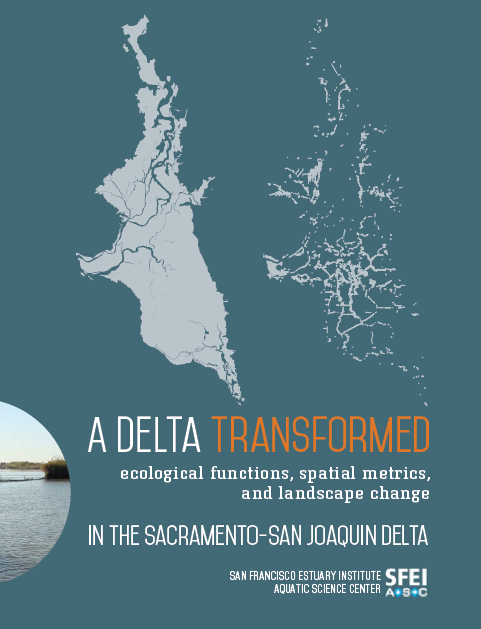From the Department of Fish and Wildlife:
A recent study produced by the San Francisco Estuary Institute-Aquatic Science Center and funded by the California Department of Fish and Wildlife (CDFW) identifies the dramatic ecological transformation of the Delta over the past 150 years.
Developed by a group of scientists and resource managers, “A Delta Transformed” explains the relationship between specific landscape features and ecological functions, and compares historic conditions with the present. It identifies the restoration framework needed to design landscapes that will support native wildlife and hold up to the threats presented by climate change and invasive species. The complete report can be found at http://sfei.li/deltametrics.
“The Delta no longer functions as a delta and is now a network of deep, engineered channels with declining abundances of native wildlife, particularly fish species, and increasing numbers of invasive species,” said Carl Wilcox, CDFW Policy Advisor to the Director for the Bay-Delta. “This critical report contributes a missing dimension to Delta planning by providing a landscape-scale perspective that illustrates how restoration in the Delta should be implemented to support native habitat and species.”
Presently, the Delta estuary is in a highly altered condition and struggling. Study participants identified a variety of landscape changes in the Delta that have impacted its ecological function over the years. These primary changes include loss of connectivity among habitat, degradation of habitat quality and loss of complexity. The knowledge gained from this project will be used to identify specific elements of the landscape that can be restored to meet the needs of native species.
The Sacramento-San Joaquin Delta is part of the largest natural estuary on the west coast of North America. It is home to more than 750 native species and supplies water to more than 25 million Californians as well as 3 million acres of farmland.
For more information …


